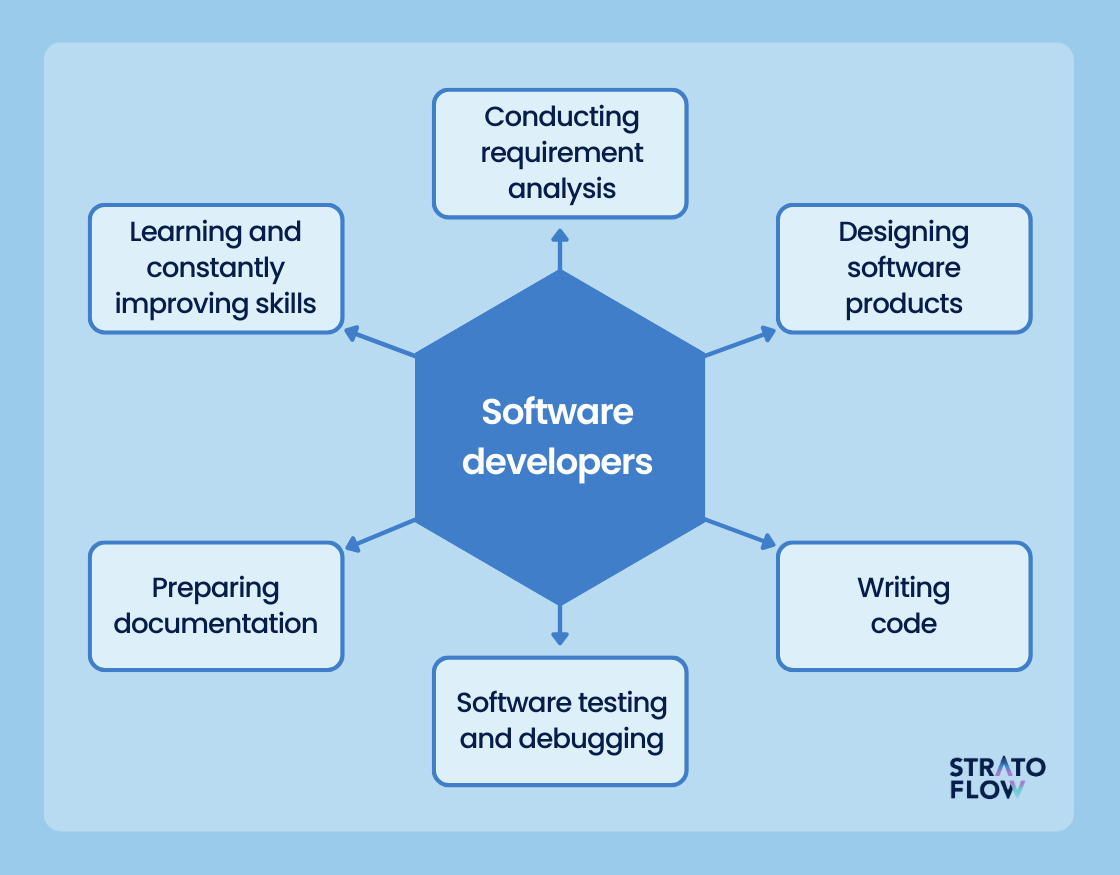Enhance Your Projects with Efficient Software Development Staff Augmentation
Enhance Your Projects with Efficient Software Development Staff Augmentation
Blog Article
Dedicated Developers vs. In-House Teams: Which Is Right for You?
The decision in between using specialized programmers and preserving an in-house team is a significant one that can affect the trajectory of your projects and general service method. Devoted designers supply a degree of adaptability and specific knowledge that can be beneficial for details, temporary efforts. On the other hand, internal groups contribute to a natural firm society and a nuanced understanding of long-lasting objectives. By examining critical variables such as spending plan, task range, and desired control, you can better figure out which technique straightens with your organizational needs. Nevertheless, the effects of this option prolong past instant end results-- think about the more comprehensive effect on your company landscape.
Recognizing Committed Developers
The growing demand for specialized abilities in the technology industry has led to the appearance of specialized developers as a practical option for lots of companies. These specialists are usually gotten on a project basis, permitting firms to utilize certain expertise without the lasting dedication connected with full time hires. Devoted programmers are commonly ingrained within a customer's group, supplying adaptability and scalability to fulfill job demands.
This version enables organizations to access a worldwide skill pool, which is specifically beneficial in a rapidly evolving technical landscape. Committed programmers can be sourced from various geographical locations, ensuring that firms can find the best ability at competitive rates. They frequently bring a wide range of experience and expertise, having serviced diverse jobs across different sectors.
Additionally, committed programmers can focus specifically on the tasks at hand, improving efficiency and efficiency. They are furnished to incorporate perfectly right into existing process, collaborating very closely with in-house groups to achieve project objectives. This approach not just minimizes the worry of employment and training but additionally allows companies to stay dexterous, adapting quickly to changing market demands and technical innovations.
Advantages of In-House Teams

Additionally, in-house teams tend to have a much deeper understanding of the company's mission, values, and goals. This alignment can improve employee interaction and motivation, as employee feel extra linked to their work and the organization's success. Additionally, having a devoted in-house team enables much better placement of techniques and objectives, as these participants are regularly concentrated on the company's priorities.
Internal groups also help with quicker decision-making processes, as they can react extra swiftly to modifications and obstacles. The established connections and experience with firm protocols permit streamlined workflows and reduced miscommunication. Inevitably, the combination of a natural society, positioning with business objectives, and effective communication makes internal groups a useful possession for lots of companies, particularly those looking to grow long-lasting growth and development.
Price Factors To Consider
When examining expense factors to consider, both committed designers and in-house teams present unique financial implications for companies. Involving devoted programmers commonly involves a pay-per-project or per hour rate model, which can be economical for businesses with changing task needs. This technique allows for flexibility in scaling sources up or my link down, making certain that business just spend for the solutions they require.
In comparison, in-house groups require fixed prices, including incomes, benefits, and overhead costs such as office and tools. While this design offers greater control and prompt schedule of resources, it might result in higher long-lasting expenditures, specifically if the work does not warrant a full-time staff.
Moreover, business should consider the concealed expenses related to recruitment and training of internal workers, which can further strain spending plans. In some instances, the moment and resources spent on taking care of an in-house group can take away from the organization's core organization goals.

Task Monitoring and Versatility
Project monitoring and versatility are crucial factors that affect the selection between in-house teams and devoted designers. Dedicated teams frequently have actually developed procedures for taking care of tasks successfully, leveraging specific methodologies like Agile or Scrum, which facilitate iterative development and adaptability.

Ultimately, the choice between dedicated designers and internal groups rests on the desired degree of adaptability and the specific job monitoring demands. Business have to evaluate their operational dynamics, project intricacy, and resource accessibility to figure out which option lines up finest with their strategic objectives.
Making the Right Choice
Picking the best development method-- dedicated programmers or internal teams-- requires a mindful evaluation of numerous aspects that align with a business's calculated objectives. On the other hand, in-house groups can offer far better continuity and combination with existing personnel.
Next, examine your budget. Dedicated designers frequently provide an affordable solution for temporary tasks, while internal groups may sustain greater lasting expenses as a result of salaries, benefits, and overhead costs. Assess the degree of control and cooperation desired; internal teams usually cultivate stronger interaction and alignment with business society.
If prompt outcomes are needed, specialized programmers can be onboarded swiftly, whereas developing an internal team takes time for employment and training. If continuous growth is vital, spending in an internal team might generate better returns over time.
Verdict
In final thought, the decision in between committed developers and in-house groups pivots on task demands and organizational directory purposes. Conversely, in-house teams grow a cohesive culture and deeper placement with long-term goals.
The decision between utilizing committed programmers and preserving an internal group is a substantial one that can influence the trajectory of your jobs and general business technique.Project administration and flexibility are essential variables that affect the option in between in-house groups and devoted designers. hire dedicated developers.In contrast, internal groups might succeed in keeping a consistent project monitoring framework due to their familiarity with the organization's culture and long-term objectives. Devoted designers typically present a cost-effective option for temporary jobs, while internal teams might incur higher lasting expenditures due to salaries, advantages, and overhead expenses.In verdict, the decision in between specialized developers and in-house groups pivots on task demands and organizational objectives
Report this page